Head-To-Head: Apple iPhone X Vs. iPhone 8
The Next Generation
Apple fans — and potential Android switchers — have some decisions to make. The new crop of iPhones includes the iPhone X (pronounced "ten"), a redesigned model with a number of changes and a much higher price tag. Then there's the iPhone 8. It's a more incremental take on the iPhone concept, but it does contain some of the same advances found in the iPhone X. Which of the new iPhones is a better fit for you? In the following slides, the CRN Test Center breaks down how the iPhone X compares with the iPhone 8 on features, specs and price.
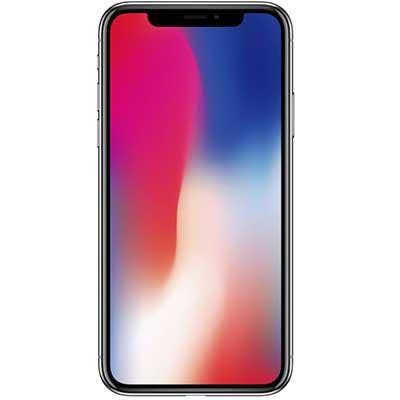
Display
The central reason for the existence of the iPhone X as a separate model is the overhauled display. The size, 5.8 inches, is the largest display yet found on an iPhone. There's also no longer a substantial bezel above and below the screen, leading to an "edge-to-edge" look for the iPhone X (still: there is a notch cut out at the top for the front-facing camera and other sensors). By comparison, the iPhone 8 retains the familiar bezels along with the 4.7-inch display size.
The iPhone 8 also sticks with LCD technology for the display and resolution of 1,334 x 750 — the same as past iPhone models. The iPhone X differs there as well by introducing OLED technology — for improved colors and contrast — and by offering nearly double the number of pixels, with 2,436 x 1,125 resolution.
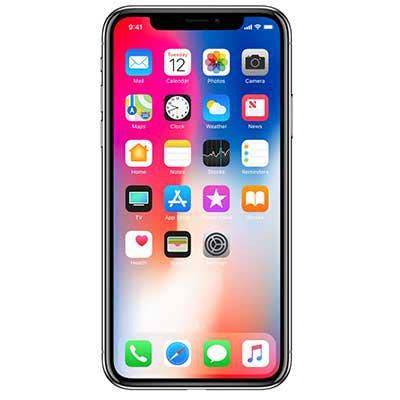
Authentication And Navigation
Some of the biggest changes around user experience of the iPhone X flow from the new display design. Apple has removed the Home Button entirely on the iPhone X and eliminated Touch ID for unlocking the device. Instead, the iPhone X includes a swiping gesture to get from an app to the home screen, and a swipe-and-hold gesture to switch between apps. To unlock the phone, the iPhone X introduces Face ID, which authenticates using facial recognition. Users will thus have to look at the phone and then swipe upward to access the device. These are all differences from the iPhone 8, which retains the Home Button and Touch ID for unlocking and navigating between apps.
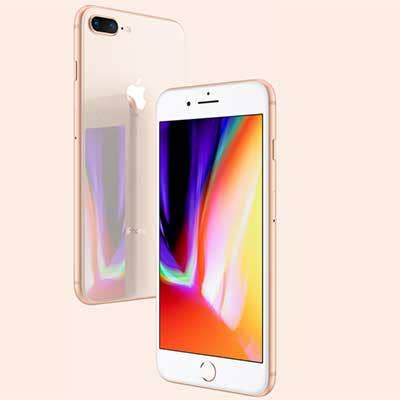
Body And Overall Size
Both the iPhone X and the iPhone 8 are getting a change in their body design from past iPhone models, with glass covering the backs of the phones as well as the front. The iPhone X will go further in terms of using premium materials, however, by using stainless steel to create the frame of the device. The iPhone 8 will retain aluminum as the main metal for the frame, although Apple says the aluminum used is significantly stronger this time around.
In terms of overall size, the two phones are similar, thanks to the minimal bezel around the iPhone X display. The iPhone 8 measures 5.45 x 2.65 inches and weighs 5.22 ounces. By comparison, the iPhone X weighs just a bit more — 6.14 ounces — and measures only slightly larger at 5.65 x 2.79 inches.
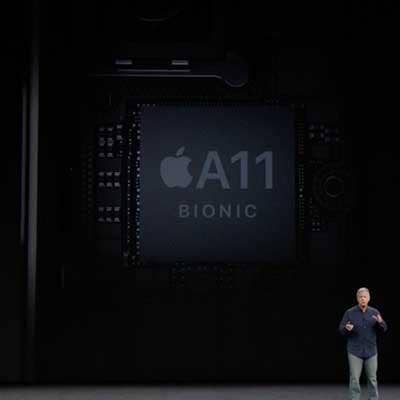
Processor
Both the iPhone X and iPhone 8 will include an upgraded processor — the A11 Bionic. The processor features six cores compared with the previous four-core A10 Fusion. Two of the cores are for high performance, offering 25 percent faster processing than the A10. The other cores are for maximizing power efficiency of certain tasks and are 70 percent faster, Apple said. In addition, the A11 Bionic integrates the first Apple-designed GPU, which offers 30 percent faster graphics over the A10. So whichever new iPhone you choose, you can expect improvements in performance.
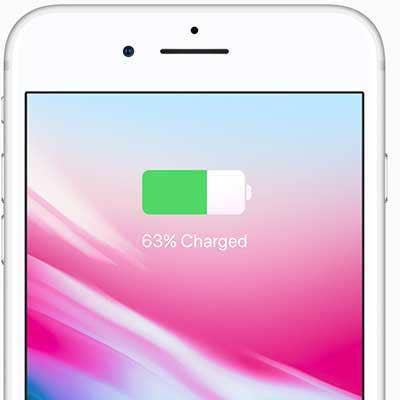
Battery Life & Charging
Apple said the iPhone X will include an advantage in terms of battery life, probably thanks in part to the use of low-power OLED display technology. While the new iPhone 8 gets roughly the same battery life as the iPhone 7, the iPhone X offers up to two additional hours of battery life for users, according to Apple.
Both the iPhone 8 and iPhone X will work with Qi wireless charging pads, which are sold separately from the phones (at first, only third-party vendors are offering the pads). Both devices will also support fast charging —Apple promises up to a 50 percent charge in a half-hour — but users will have to buy a separate USB-C adapter and Lightning-to-USB-C converter.
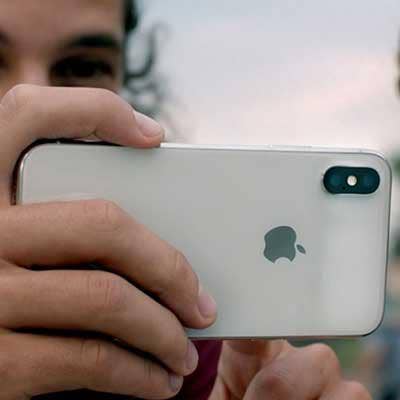
Camera
While the iPhone 8 sticks with a single-camera setup (of 12 megapixels), the iPhone X comes with dual 12-megapixel cameras on the rear-facing side. Both the wide-angle and telephoto cameras on the iPhone X will include dual optical image stabilization.
Notably, the cameras in both phones are calibrated for use with augmented reality apps, and include sensors such as a new gyroscope that will help with AR usage, Apple said.

Storage
While the iPhone 7 base model had come with 32 GB of storage — not enough for many users — Apple has wisely switched things up for the new generation of iPhones. Both the iPhone X and iPhone 8 now start with 64 GB of storage. A configuration with 256 GB of storage is the sole other option for both devices.

Price And Availability
Pre-orders for the iPhone 8 begin Friday, with shipping to start on Sept. 22. Meanwhile, the iPhone X won't begin pre-orders until Oct. 27, with shipping set to start on Nov. 3.
The price difference between the two phones comes out to $300 in all configurations. The entry-level iPhone 8 is priced at $699 for 64 GB of storage, while Apple is charging $849 for the 256-GB iPhone 8 model.
The iPhone X starts at $999 for the 64-GB model — a price driven at least in part by the higher cost of the OLED display — while the 256-GB iPhone X is priced at $1,149.
Bottom Line
The iPhone X looks to be a very pretty device with a lot to offer in terms of screen space for productivity and fun. But it's also got some major changes — especially around authentication and navigation — that could take some getting used to. While Apple has offered assurances that all of the new features and gestures will work smoothly, users should keep in mind that the iPhone X is a first-generation device that may not work as intuitively as the iPhones they've had in the past. Paying $1,000 for a device that may not be perfect is the question that potential iPhone X buyers are faced with. While the iPhone 8 doesn't represent "the future of smartphones," you can feel pretty sure you'll know what you're getting with it. If predictability and affordability are the priorities in your choice of a new iPhone, then the iPhone 8 will likely be the safer choice over the iPhone X.